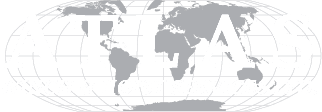In any lifting or hoisting operation, rigging safety must always come first. When handling heavy loads, the correct use of rigging equipment, such as rigging straps, chains, slings, and lashings, can mean the difference between a successful lift and a costly or dangerous failure. At Atlas Winch Hire & Hoist Services, we understand the importance of safety and reliability, which is why we stock an extensive range of rigging hardware designed for heavy-duty use.
Choosing the Right Chain Sling or Rigging Strap
One of the foundational elements of safe rigging is choosing the right chain sling or strap for the job. Chain slings offer durability and high strength, ideal for lifting heavy or awkward loads. Meanwhile, synthetic slings or webbing rigging straps provide flexible, lighter alternatives that are less likely to damage the load surface.
The selection often depends on load weight, geometry, environment, and required safety margin. Always check the working load limits and ensure your rigging straps or chain sling assemblies are certified and inspected before use.
Using the Correct Rigging Hardware
Another key factor is matching the rigging configuration to the lift. Using appropriate rigging hardware, such as shackles, snatch blocks, and hooks, is essential for proper load distribution.
For instance, a snatch block can help redirect rope or cable runs and reduce side loading on a lifting winch, while the correct shackle ensures the chain or sling connects safely without bending or overloading the link. Atlas Winch’s rigging equipment range includes snatch blocks from 2 to 250 tonnes, along with shackles, slings, turnbuckles, and more.
Managing Sling Angles and Load Forces
The angle of the slings is an often-overlooked safety factor. As the angle between sling legs increases, the tension in each leg rises dramatically. What feels like a light load at a narrow angle can exert much greater force at wider angles.
That’s why it’s vital to keep sling angles within recommended maximums unless specially engineered otherwise. Using the right configuration helps control forces and avoids overloading any component of the rigging system.
Inspections and Maintenance
Inspection is a non-negotiable part of rigging safety. Rigging straps, chain slings, and all associated hardware must be visually inspected before each use. Look for signs of wear, elongation, cracked welds, corrosion, fraying, deformation, or damage. Any suspect component should be removed from service immediately.
After use, clean your equipment, store it in a dry, well-ventilated area, and avoid dragging slings across rough surfaces. Proper maintenance increases reliability, reduces costs, and extends the life of your rigging equipment.
Training and Safe Crane Rigging Practices
Training and procedure are just as critical as the equipment itself. Only trained personnel should assemble the rigging setup, attach loads, and operate the lifting system.
Crane rigging or complicated lifts need to be engineered and supervised by qualified personnel. Always plan the lift, check for overhead obstacles, and ensure load paths are clear before operating. Communication is key – use signals, spotters, or radios to keep every member of the team coordinated.
Rigging Equipment from Atlas Winch Hire & Hoist Services
By combining the right selection of rigging equipment with consistent inspection, careful planning, and knowledgeable operators, you uphold safety and efficiency on every lift. When your operations depend on reliability, you need equipment you can trust.
Our team at Atlas Winch Hire & Hoist Services can help you choose the right chain slings, rigging straps, snatch blocks or crane rigging setup for your job. Visit our Rigging Equipment page or get in touch to discuss your lifting requirements.








